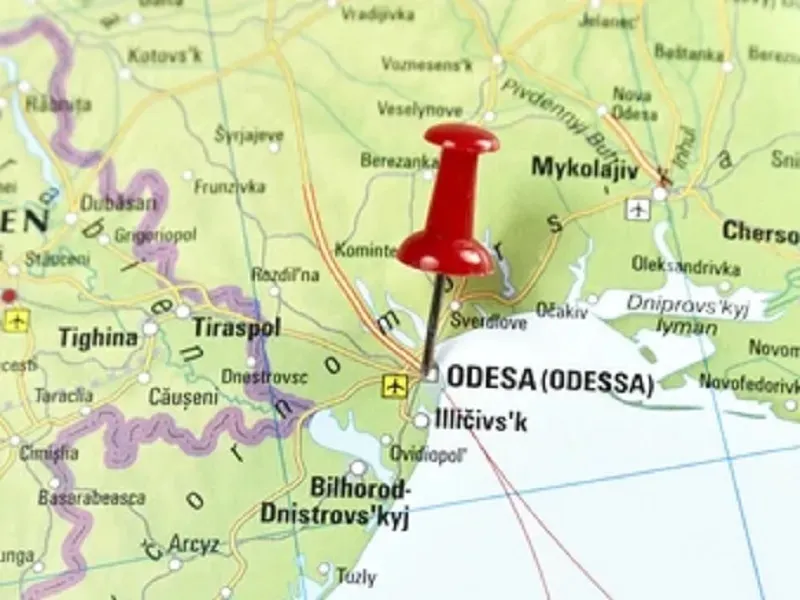Romania and Moldova, where France already has troops and just signed a security pact that might soon lead to the same, could easily serve as its launchpad Odessa
Russian foreign spy chief Naryshkin warned on Tuesday that France is preparing to send 2,000 troops to Ukraine following Macron’s claim last month that a conventional NATO intervention can’t be ruled out. This statement also coincided with France’s top general confirming that his forces are ready to deploy wherever they might be needed, which discredited the Defense Ministry’s description of Naryshkin’s warning as “disinformation” since there’s some objectively existing truth to what he said.
While many members of the Alt-Media Community mocked Macron’s claim last month, a prestigious Russian expert just lent credence to it in an interview with Sputnik. Alexander Mikhailov, who’s the head of the Bureau of Military-Political Analysis think tank in Russia, told that outlet on Tuesday that “Macron undoubtedly has access to both the personnel and the resources to send troops to Ukraine.” It’s therefore not implausible to imagine that France might conventionally intervene there.
If that happens, then it would either be pre-emptive or reactive and either unilaterally or as part of a “coalition of the willing”. Regarding the first choice, France could attempt to justify this on the pretext of getting a head start before Russia achieves a breakthrough across the Line of Contact (LOC), or it could just wait till that “trigger event” happens. As for the second choice, it’ll either do this on its own, or more likely in partnership with the UK, Poland, and the Baltic States, with possible German participation.
Regardless of the pretext and whoever else might participate, France will almost certainly seek to secure Ukraine’s Black Sea coast if it conventionally intervenes. It’s already had several hundred troops in Romania since early 2022, which can be ramped up ahead of this move, and just signed a security pact with Moldova earlier this month that could possibly lead to it hosting troops too. The “Eastern Balkans”, which are falling under France’s “sphere of influence”, can thus become a French launchpad to Ukraine.
Romania and Moldova already border Ukraine’s Odessa Oblast, the eponymous capital of which is both strategically and symbolically important. It’s that former Soviet Republic’s top port but also an historically Russian city. Securing it from Moscow’s control by dispatching NATO-member France’s troops there as a so-called “deterrent” in the event that the LOC collapses or appears on the brink of collapsing is therefore doubly important for the West.
Naval drones could continue threatening the Russian Fleet in that scenario while that country’s supporters might become disheartened after realizing that reunification with Odessa would be nigh impossible without sparking World War III if that city comes under de facto NATO control via France. Since the Dnieper has already proven a formidable obstacle to both sides’ forces over the past two years, it’s very possible that France might expand its zone of control along the Black Sea coast up to Kherson.
That would then result in the Russian-Ukrainian LOC becoming a Russian-NATO one, and it could even expand northwards up the Dnieper to the Zaporozhye Nuclear Power Plant, but French forces might be reluctant to cross the river to Zaporozhye and beyond in order to not over expand their military logistics. Furthermore, since this intervention scenario would be connected to a possible Russian breakthrough, France might not want to risk coming to blows with Russia on the eastern side of the Dnieper.
For as unprecedentedly dangerous as this sequence of events might be due to the very high risk that World War III could be sparked by miscalculation, the silver lining is that it could potentially freeze each side’s positions along the southern front at least and thus set the partial basis for a ceasefire. Ukrainian troops could also flee westward across the Dnieper if Russia breaks through the LOC and know that their foes probably wouldn’t follow them for fear of sparking World War III by clashing with NATO troops.
That could enable Russia to secure President Putin’s envisaged “sanitary/security zone” that he spoke about during his re-election speech, thus setting the stage for Ukraine’s asymmetrical partition between NATO and Russia with a “buffer zone” in Northeastern-Eastern Ukraine. Honestly speaking, Ukraine’s Black Sea coast is France’s for the taking, but only if Paris has the political will to go for it and its people don’t revolt from the enormous Russian-inflicted casualties that could follow (likely via missile strikes).



